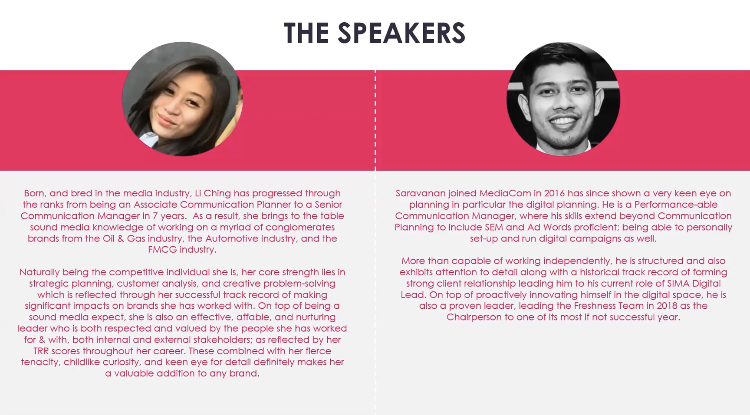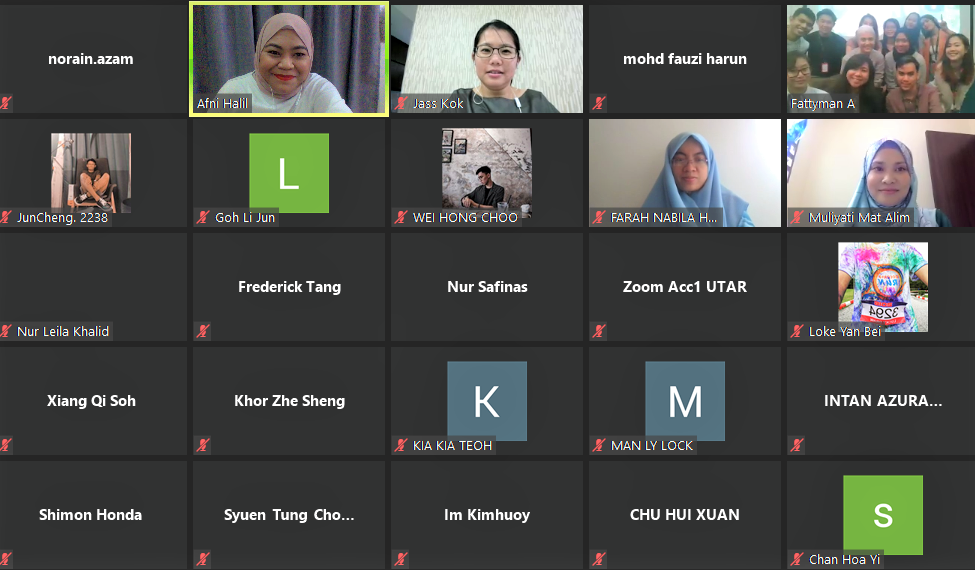
AdTank 3.0 imparts knowledge on digital advertising
AdTank returns for the third time, via online, with a webinar titled “AdTank 3.0: The Mystical Future of Digital Advertising”, organised by the Department of Advertising of Faculty of Arts and Social Science on 28 August 2020 via Zoom.
The webinar aimed to create synergy between different institutions and provide a framework that will increase the ability of students from various backgrounds to participate in planning, problem-solving, and decision-making within the creative industry. It is also hoped that the webinar will bring to light the importance of inter-institutional collaborations in facing the Fourth Industrial Revolution for the development of higher education institutions and cooperation among several institutions. The inter-institutional collaborations will make team network approach more effective in sharing knowledge, skills and techniques, especially to the students.

Invited to share their insights from the creative industry were speakers Senior Communications Planner and Communications Manager Saravanan Asogan and Senior Communications Manager Cheok Li Ching from MediaCompete Malaysia. Also present at the webinar was Department of Advertising Head Kok Hui Meian with staff and participants.
Being the first to speak, Saravanan debunked a few marketing myths and enlightened participants with insights on successful marketing. He first mentioned that many people believed marketing creates brands.
“Contrary to the popular belief, your brand is not your logo, tagline and so forth. Your brand consists of the emotions that customers feel when they think about your product and while those emotions can sometimes be triggered by logos and so forth, they originate in the product experience. So the truth is, customer experience is the one that creates brands,” explained Saravanan.
The second myth that many people believed is that marketing is all advertisement. “If we compare native advertising and content marketing, we will first see that native advertising is you talking to your consumers. In content marketing, there is an opportunity to talk with the consumers. For instance, we see consumers leaving comments on your blog spots, interact with you on your webinar, comment or like your social media posts,” said Saravanan.
“Native advertising focuses on showing, where it takes the stance of telling consumers about the business, a product, or a service. Content marketing, however, puts out the content that consumers find interesting, useful and valuable. Native advertising also banks on the fact that you see their product and you buy into their product. Content marketing, on the other hand, educates and nurtures the consumers with knowledge of your brand, product and services. So the truth is, content or advertisement is like ‘left hook versus right cross’. To win the fight, you will probably need both,” he explained further.
The other myth that he spoke of is believing that good products do not need publicity. “In truth, it is not what you say, but it is how you say it. The reality is that social media algorithms and pure volume of activity from brands today do not leave much opportunity for an organic campaign to truly fly unless it is truly an anomaly. However, the upside of this reality is that marketers have a myriad of options to explore and promote the content in a creative manner. Essentially, if spent in the right way, brands have the chance to get in front of the right audience who will enjoy this content, and in turn create organic, and even viral engagement. Ultimately, the best campaigns are the ones that are based on true insights,” said Saravanan.
When participants were asked if consumers are king, Saravanan cleared their doubts by explaining that consumer has the power to pick, filter, and select because they want to feel empowered. And digital made them a king.
“In the past, digital only gives certain access, for instance, we have to wait for our favourite show to come on the television at the set time, or we listen to the radio in hopes that our favourite song will play next. However now, digital has broken that limitation and we can stream our favourite shows anytime and anywhere, as long as we have internet. If you want to listen to songs, you do not need to tune the radio because there are so many digital apps that allow you to listen to your favourite songs on loop, anytime and anywhere,” said the speaker.
“Consumers are king because their media usage affects the penetration of the mediums. As consumers get control over digital, the rise of digital causes major offline medium to be on a decline. So what do consumers really want? They want tailored content whereby consumers can customise; convenience, which gives consumer wide access, and cost-effectiveness, which means having free access to different digital platforms. If we look at the relationship chain between consumers, advertisers and digital platforms, consumers are at the top of the pyramid yet they provide essential data and feedback to the platform and advertisers. For instance, when a consumer purchases a product from the advertiser, it tells the advertiser what this consumer likes, and then they design a customised advertisement for the consumer, while at the same time, using digital platform as a space to advertise their advertisements. In the same instance, the consumer is also passing consumption data to the platform and the platform provides the advertised content to the consumer,” he explained.
The next session with Cheok saw her enlightening participants on the five key consumer trends. The first key trend she mentioned was digital dependency and how it grows in our lives. “Our lives are constantly intertwined with digital. For instance, we see the use of smartphones and we consider the factor of balancing our time between online and offline. We also consider if it is useful or it causes frustration. Regardless, we see the use of digital in navigation and transportation, health care and wearable, voice-activated home appliances, security systems, eWallets and food aggregators, smart shops beyond ecomm, agricultural expansion, and immersive and connective tech,” said Cheok.
“The second trend is ‘The discourse of self’, which is a culture that you commonly see in our lives right now. From the slide, you can see it is colourful and loud because that is the current situation right now. There are endless noise and distraction in the world. In the digital sphere, that is the downfall of digital, where they pick up all these signals and they think they know you, but do they really know you? So here we do our best to find out about people and consumers, which brings back to the point of insight being the key. So my advice is to use various digital options so you can target people at different points because their mindset is constantly changing,” said Cheok.
She added, “The third trend is ‘For the urban revolution’ which showcases that consumers are purchasing things at a more conscious level like they will buy healthy or organic products to keep a healthy lifestyle. Consumers want natural living but in the convenience of the city lives. Other products are like green cities and building, which are leading to self-sustenance, where the end user makes changes to their lifestyle. The fourth one is ‘Walking the heritage trail’, which is a narrative that is constantly being pushed by the government, tourism boards and schools. Everyone will talk about where they have been so they know who they are and how they can move forward. It is like giving consumers a chance to look back in the past and see how much they and the country have grown.”
“Lastly, ‘The generation of We’ trend is a growing trend. It defines who we are as a person and breaks down polarisation, bringing more community together. This trend makes us want to grow and understand that this goes beyond being individual. Instead, it focuses more on empathy, human rights, awareness of mental health and many others. The current generation has the most accessible information and it allows people to choose what they want to care about. Eventually, it is about understanding and learning how to live with each other,” explained Cheok.
Towards the end of the webinar, participants learnt of the best digital campaigns in class from various brands. Followed after was an interactive Q&A session.

A group shot of the speakers with the participants
![]()
© 2020 UNIVERSITI TUNKU ABDUL RAHMAN DU012(A).
Wholly owned by UTAR Education Foundation Co. No. 578227-M LEGAL STATEMENT TERM OF USAGE PRIVACY NOTICE